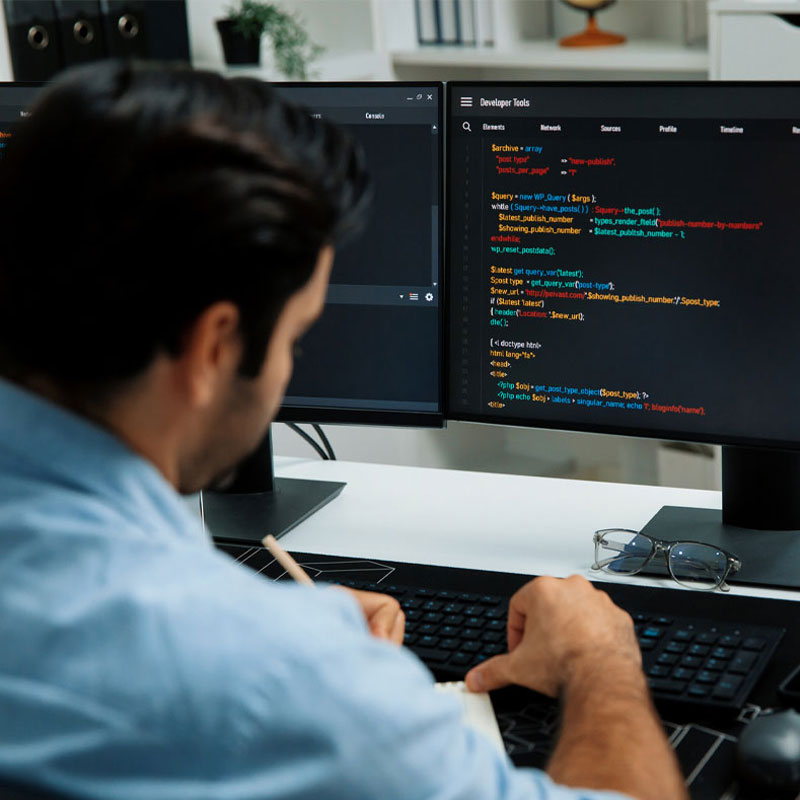Augmented Reality
AR mobile ads for games launched by ironSource
Monday, November 20, 2017

|
Richard Harris |
Mobile AR advertising has been released by the ironSource advertising network.
ironSource has recently launched AR ads for their advertising network. As the first network offering AR ads, ironSource is developing a format that showcases the same experience of the game in an ad environment. The AR ads use 3D assets from the original game, and can run on both iOS and Android in-app traffic, within rewarded, video, and display placements. The ads are created in ironSource’s Playworks Studio, by graphic designers and animators, along with programmers, game designers and data scientists.
Dan Greenberg is the Chief Design Officer at ironSource, where he oversees everything related to design and creative, ranging from client ad creative to company branding. He oversees ironSource's Playworks Studio, an in-house team of designers, video editors, developers and data scientists who combine data and creative expertise to innovate around the mobile ad experience.
Greenberg: As of now, AR ads are heavier than some other ads out there, and can therefore be challenging to iterate and optimize. Unlike other forms of advertising that have been in development for years, the process of creating AR ads is not yet as agile and the technology isn’t fully mature yet, so we can expect this to improve at a rapid clip as adoption increases.
AR ad production also requires a wide variety of skill sets - for every AR ad we have a 3D animator as well as graphic designers and developers who need to work on the project. Looking at the challenges from a creative angle, with AR ads it’s critical to find the right scene, character, or object which will be placed in a real-world environment and immediately engage the consumer. For example, when looking at the optimal size for assets - you could opt for a full-room sized monster, or table-sized monster - one has more impact but the other is more viable across various real world situations.
While AR ads present many hurdles for advertisers to overcome, the advantages in creating an amazing user experience - one that is not only opt-in, rich, and interactive, but which enables users to really test drive that experience - are enormous.
Greenberg: As with any new technological breakthrough in the gaming industry, there is always trial and error in figuring out which categories fit best with trends consumers engage with. Developing AR games is no exception, and we may see some applications which work incredibly well and some which are more gimmicky. Once the process matures, however, we expect to see AR ads really taking off - like the initial success of Pokemon Go. However long it takes for AR ads to become more mainstream, it’s clear the biggest tech companies out there are pushing this hard - for example, it’s notable that since launching ARKit, Apple has been featuring AR-supported games on the App Store homepage.
Greenberg: For starters, consumers met with AR ads have a more immersive ad experience than a standard banner ad. As the industry moves away from traditional ad formats that disrupt the user experience and result in frustration at best and ad blocking at worst, opt-in, interactive ad formats like rewarded video, playable ads and AR ads will increasingly come to the forefront.
With AR ads, the experience can be as engaging as an actual game. Additionally, because users have to allow access to their camera for the ads to work, they have a choice in engaging with branded content or experiences. It comes down to creating positive experiences that encourage interactivity.
Greenberg: Our initial instinct was that AAA games would benefit the most. This is largely because they have rich worlds and characters that would translate well into real-world environments, and they also benefit from rich ad formats that can reflect their in-game experience the most accurately. While this is definitely true, what we’re seeing as we talk to more clients is that AR ads can be a great fit for casual games as well - just imagine test driving a solitaire app with virtual cards that appear on top of whatever real-world surface is right in front of you.
Greenberg: Digital advertising in general is moving towards richer, more immersive, and more opt-in experiences. From rewarded video ads to playables and interactive video ads, we’re seeing an increasing focus on putting user choice and user engagement at the centre. Moreover, these ads take full advantage of the mobile medium - leveraging the unique mobile experience to create ads that interact with their surroundings. AR ads play off these trends perfectly.
Greenberg: In line with a broader trend around interactivity, our focus at ironSource is to build ads that put users at the centre of the experience, giving them as much choice and control as possible. We believe this is key to creating truly personalized experiences on mobile. Beyond our playable and video gameplay ads, we’re investing heavily in ad formats where users can select their preference and see the ad change to reflect those preferences. This is not only exciting from a user experience perspective, but also in terms of helping advertisers understand their consumers better. Imagine being able to ask your target audience what their preferences are - at scale. That’s the kind of in-ad data we’ll be able to make available to our advertiser clients.
Greenberg: For now, the ads are only available through Playworks Studio, a division of the company dedicated to using game design and performance expertise to innovate around ad creatives. These kinds of rich creatives require a full team of creative engineers to conceptualize, design and produce - from graphic designers, to animators, developers, game designers, and data scientists. Looking to the future, however, we will strive to make these kinds of capabilities available in a more self-served manner - to empower more advertisers to leverage the impact of rich, interactive creatives.
Greenberg: First of all, and most importantly - users. With this new format, users encounter ads that are actually enjoyable and provide a more entertaining experience, with AR ads often mimicking the in-game experience. They’re also non-intrusive - users have to actively choose to engage with an AR ad. Finally, AR ads across verticals, whether that games or retail or travel, empower users to really test-drive the products, games or apps being advertised.
AR ads also facilitate a stronger connection between the consumer and the brand, associating the brand with a positive and rich experience. AR ads not only benefit users, then, but also the game companies and of course the advertisers trying to reach valuable audiences in new ways.
Greenberg: While the gaming industry is in a particularly advantageous spot to see campaign results, other verticals should be looking to gaming for inspiration in engaging their own audiences. Retail is an obvious fit for AR ads. With eCommerce transforming how brands reach consumers, and how consumers search for and buy products, brands could use AR to facilitate online shopping, providing consumers with more enhanced visuals of what clothes, furniture or accessories would look like in real life. AR ads could also prove to be applicable to travel applications, mapping and social platforms. The possibilities are endless.
Dan Greenberg is the Chief Design Officer at ironSource, where he oversees everything related to design and creative, ranging from client ad creative to company branding. He oversees ironSource's Playworks Studio, an in-house team of designers, video editors, developers and data scientists who combine data and creative expertise to innovate around the mobile ad experience.
ADM: What were some of the challenges and advantages in creating AR ads for games compared with other interactive formats for in app advertising?
Greenberg: As of now, AR ads are heavier than some other ads out there, and can therefore be challenging to iterate and optimize. Unlike other forms of advertising that have been in development for years, the process of creating AR ads is not yet as agile and the technology isn’t fully mature yet, so we can expect this to improve at a rapid clip as adoption increases.
AR ad production also requires a wide variety of skill sets - for every AR ad we have a 3D animator as well as graphic designers and developers who need to work on the project. Looking at the challenges from a creative angle, with AR ads it’s critical to find the right scene, character, or object which will be placed in a real-world environment and immediately engage the consumer. For example, when looking at the optimal size for assets - you could opt for a full-room sized monster, or table-sized monster - one has more impact but the other is more viable across various real world situations.
While AR ads present many hurdles for advertisers to overcome, the advantages in creating an amazing user experience - one that is not only opt-in, rich, and interactive, but which enables users to really test drive that experience - are enormous.
ADM: What are the implications of Apple's ARKit and Google's ARCore for the mobile gaming industry?
Greenberg: As with any new technological breakthrough in the gaming industry, there is always trial and error in figuring out which categories fit best with trends consumers engage with. Developing AR games is no exception, and we may see some applications which work incredibly well and some which are more gimmicky. Once the process matures, however, we expect to see AR ads really taking off - like the initial success of Pokemon Go. However long it takes for AR ads to become more mainstream, it’s clear the biggest tech companies out there are pushing this hard - for example, it’s notable that since launching ARKit, Apple has been featuring AR-supported games on the App Store homepage.
ADM: What are the benefits of AR ads for consumers?
Greenberg: For starters, consumers met with AR ads have a more immersive ad experience than a standard banner ad. As the industry moves away from traditional ad formats that disrupt the user experience and result in frustration at best and ad blocking at worst, opt-in, interactive ad formats like rewarded video, playable ads and AR ads will increasingly come to the forefront.
With AR ads, the experience can be as engaging as an actual game. Additionally, because users have to allow access to their camera for the ads to work, they have a choice in engaging with branded content or experiences. It comes down to creating positive experiences that encourage interactivity.
ADM: What kinds of games do AR ads work best in conjunction with?
Greenberg: Our initial instinct was that AAA games would benefit the most. This is largely because they have rich worlds and characters that would translate well into real-world environments, and they also benefit from rich ad formats that can reflect their in-game experience the most accurately. While this is definitely true, what we’re seeing as we talk to more clients is that AR ads can be a great fit for casual games as well - just imagine test driving a solitaire app with virtual cards that appear on top of whatever real-world surface is right in front of you.
ADM: How is AR fitting into larger trends in digital advertising today?
Greenberg: Digital advertising in general is moving towards richer, more immersive, and more opt-in experiences. From rewarded video ads to playables and interactive video ads, we’re seeing an increasing focus on putting user choice and user engagement at the centre. Moreover, these ads take full advantage of the mobile medium - leveraging the unique mobile experience to create ads that interact with their surroundings. AR ads play off these trends perfectly.
ADM: What kinds of new ad formats does ironSource plan on developing in the future?
Greenberg: In line with a broader trend around interactivity, our focus at ironSource is to build ads that put users at the centre of the experience, giving them as much choice and control as possible. We believe this is key to creating truly personalized experiences on mobile. Beyond our playable and video gameplay ads, we’re investing heavily in ad formats where users can select their preference and see the ad change to reflect those preferences. This is not only exciting from a user experience perspective, but also in terms of helping advertisers understand their consumers better. Imagine being able to ask your target audience what their preferences are - at scale. That’s the kind of in-ad data we’ll be able to make available to our advertiser clients.
ADM: Will the ads always only be available from the ironSource studio?
Greenberg: For now, the ads are only available through Playworks Studio, a division of the company dedicated to using game design and performance expertise to innovate around ad creatives. These kinds of rich creatives require a full team of creative engineers to conceptualize, design and produce - from graphic designers, to animators, developers, game designers, and data scientists. Looking to the future, however, we will strive to make these kinds of capabilities available in a more self-served manner - to empower more advertisers to leverage the impact of rich, interactive creatives.
ADM: Who aims to benefit most from these new formats?
Greenberg: First of all, and most importantly - users. With this new format, users encounter ads that are actually enjoyable and provide a more entertaining experience, with AR ads often mimicking the in-game experience. They’re also non-intrusive - users have to actively choose to engage with an AR ad. Finally, AR ads across verticals, whether that games or retail or travel, empower users to really test-drive the products, games or apps being advertised.
AR ads also facilitate a stronger connection between the consumer and the brand, associating the brand with a positive and rich experience. AR ads not only benefit users, then, but also the game companies and of course the advertisers trying to reach valuable audiences in new ways.
ADM: Other than the gaming industry, are there other industries that can experience major campaign results?
Greenberg: While the gaming industry is in a particularly advantageous spot to see campaign results, other verticals should be looking to gaming for inspiration in engaging their own audiences. Retail is an obvious fit for AR ads. With eCommerce transforming how brands reach consumers, and how consumers search for and buy products, brands could use AR to facilitate online shopping, providing consumers with more enhanced visuals of what clothes, furniture or accessories would look like in real life. AR ads could also prove to be applicable to travel applications, mapping and social platforms. The possibilities are endless.

Become a subscriber of App Developer Magazine for just $5.99 a month and take advantage of all these perks.
MEMBERS GET ACCESS TO
- - Exclusive content from leaders in the industry
- - Q&A articles from industry leaders
- - Tips and tricks from the most successful developers weekly
- - Monthly issues, including all 90+ back-issues since 2012
- - Event discounts and early-bird signups
- - Gain insight from top achievers in the app store
- - Learn what tools to use, what SDK's to use, and more
Subscribe here









